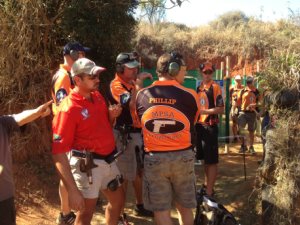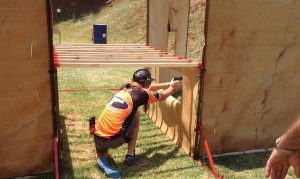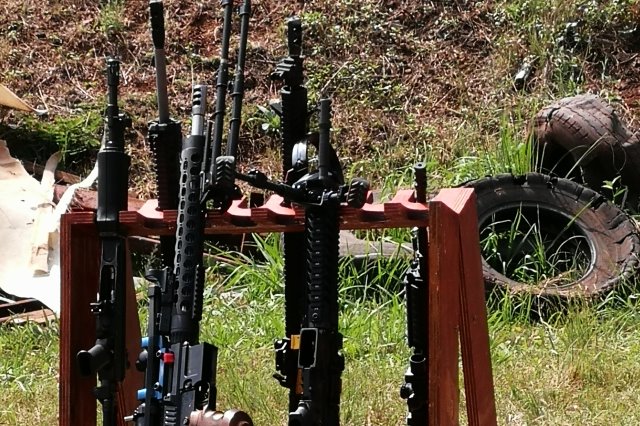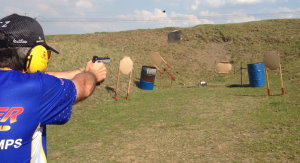About MPSA and IPSC as sport
History of the sport
(some content taken from www.ipsc.org)
The art of shooting can be traced back to the Middle Ages, but it was not until the 19th century that it truly developed into a
sport. Over the past 200 years, shooters have come together at local, national, and international levels to practice and compete
across a wide range of disciplines.
IPSC-style competitive shooting originated in Southern California, U.S.A., in the late 1950s and quickly
spread across the shooting world. As the sport grew in popularity, participants began seeking a more structured format and
competitive environment. This led to the International Pistol Conference, held in May 1976 in Columbia, Missouri, where sportsmen
from around the world came together to define the structure, organization, and future of IPSC marksmanship. From this gathering,
a constitution was established, and the Confederation was born.
Accuracy, power, and speed were established as the core elements that form the foundation of IPSC. The
motto DVC—Diligentia, Vis, Celeritas (Accuracy, Power, Speed)—was introduced to reflect this balance. Alongside these principles,
strict safety protocols, procedures, and competition rules were adopted. IPSC athletes must skillfully combine accuracy, power,
and speed to achieve success. Standard handgun targets measure 75 cm by 45 cm, with a 15 cm center known as the ‘A zone’ or
bull’s-eye.
Most IPSC shooting takes place at relatively short distances, with occasional shots reaching out to
50 meters. While hitting a 15-centimeter zone may seem easy for an experienced pistol shooter, it is far more challenging for
beginners. In IPSC, only full-power handguns (9mm or larger) are permitted.
Mastering a full-power handgun is far more challenging than shooting a light-recoiling target pistol,
especially when competitors are pushing for maximum speed. Time is a critical factor in IPSC: scores are divided by the time
taken to achieve them, adding a demanding element of both pressure and precision.
Handgun shooters may enter any one of the following divisions, depending on the type of firearm they use:
Open, Standard, Production, Revolver, Classic, Production Optic, and Production Optic Light.
 IPSC is not limited to
handguns and also includes the following disciplines: Handgun, Rifle, Shotgun, Mini Rifle, Action Air, and Pistol Caliber Carbine
(PCC).
IPSC is not limited to
handguns and also includes the following disciplines: Handgun, Rifle, Shotgun, Mini Rifle, Action Air, and Pistol Caliber Carbine
(PCC).
Rifle and Shotgun disciplines are similar to Handgun but differ in many details. The differences are
outlined in their respective competition rules, and only a detailed comparison can reveal the full extent of these differences.

IPSC shooting incorporates multiple targets, moving targets, reactive targets, penalty targets, partially covered targets,
obstacles, movement, competitive strategies, and various techniques to keep athletes challenged and spectators entertained.
Although its roots are martial, the sport has evolved from those beginnings, much like karate, fencing,
and archery. IPSC shooting is an international sport that emphasizes safety and proper gun handling, as well as accuracy, power,
and speed, in high-level competitions held worldwide—from Argentina to Zimbabwe.
General principle
- IPSC matches are designed, constructed and conducted with due consideration to safety.
- Courses of fire must be designed primarily to test shooting skills and not physical ability.
- Accuracy, power and speed are equivalent elements of IPSC shooting.
- IPSC shooting challenges are diverse
- IPSC matches are freestyle. Competitors are permitted to shoot targets on an “as and when
visible basis” in order to solve challenges in a freestyle manner.
Handgun rules
- Minimum cartridge caliber is 9×19.
- Minimum bullet diameter is 9 mm (Smaller calibers may be used at Club level to promote safe firearm use and interest in the sport)
- Firearms must be safe and serviceable
- A competitor may never use or wear on his person more than one firearm during a course of fire (Disqualification under unsafe firearm handling)
- Handguns with shoulder stocks and/or fore grips of any kind are prohibited